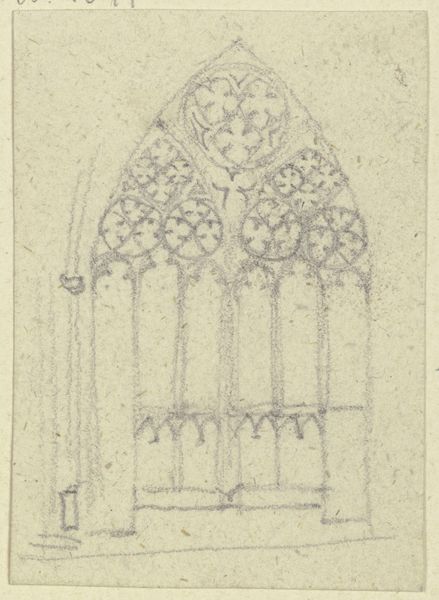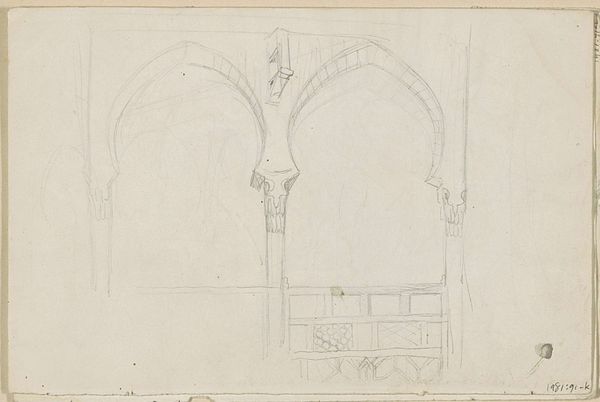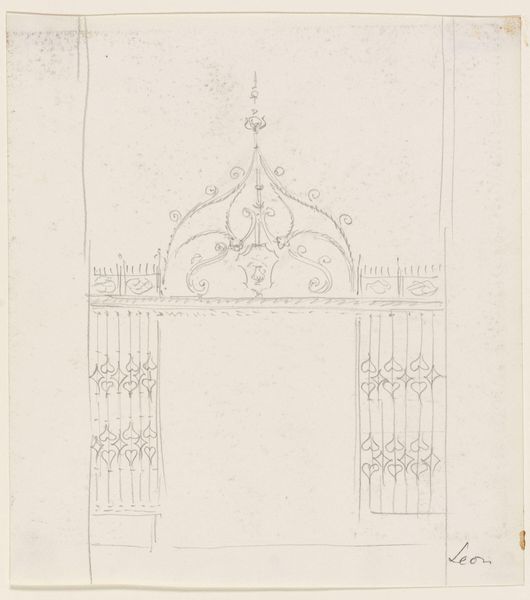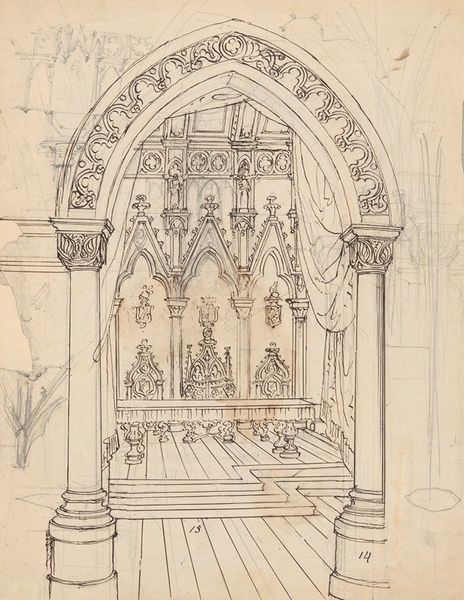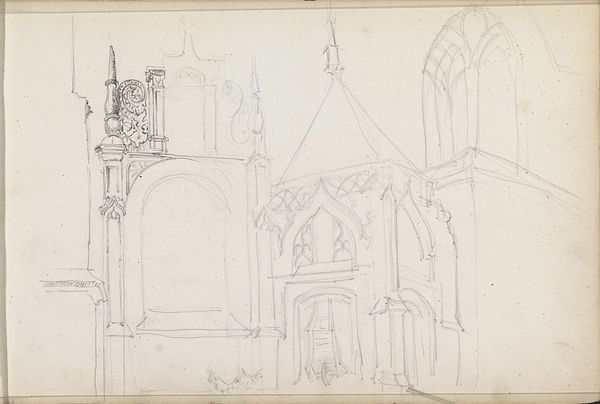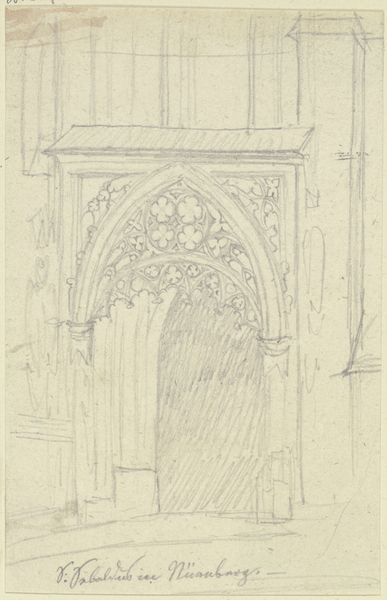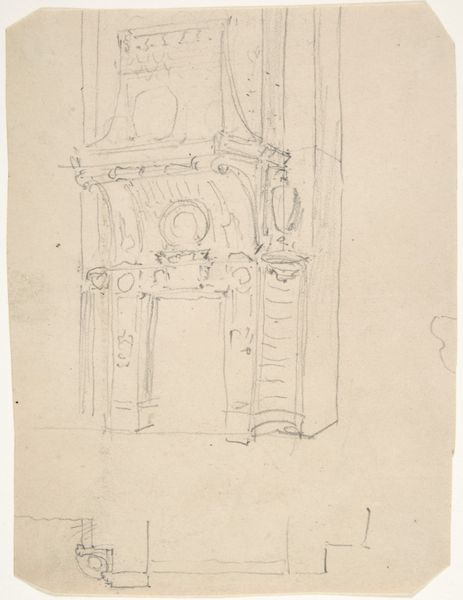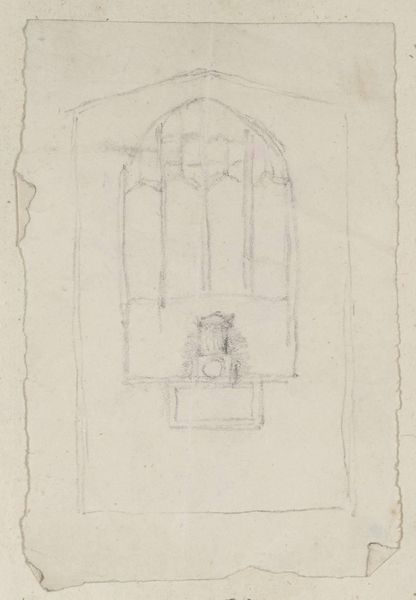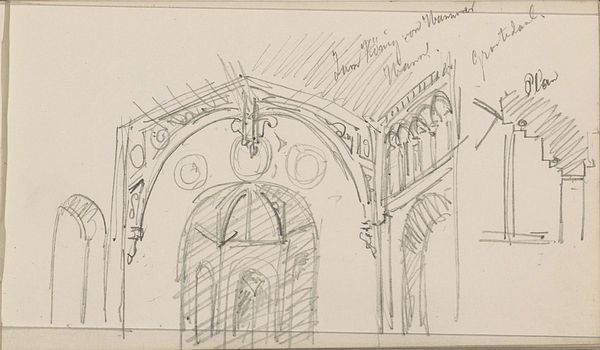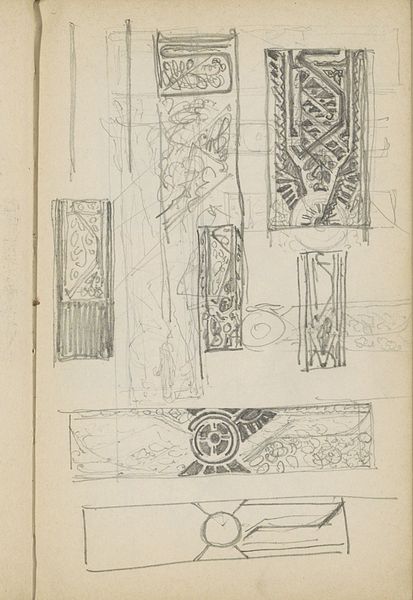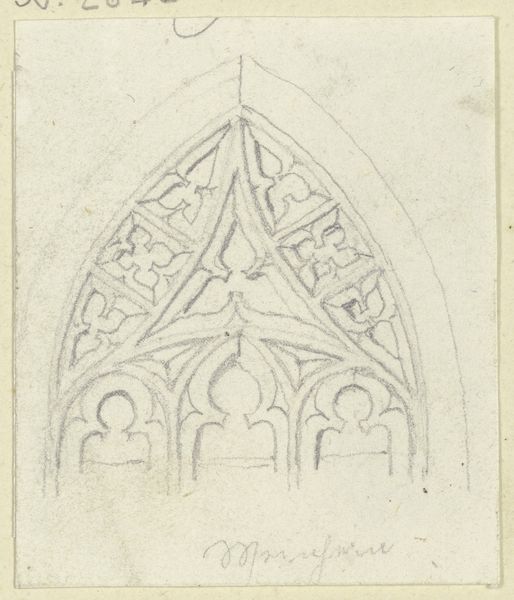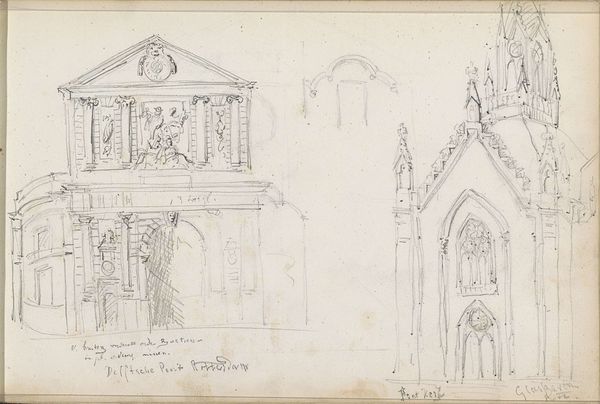
drawing, pencil
#
drawing
#
pen sketch
#
incomplete sketchy
#
landscape
#
personal sketchbook
#
idea generation sketch
#
sketchwork
#
ink drawing experimentation
#
pen-ink sketch
#
pencil
#
pen work
#
sketchbook drawing
#
initial sketch
Copyright: Rijks Museum: Open Domain
Curator: Isaac Gosschalk's pen and pencil drawing, "Detail van de architectuur van de Trinkhalle te Hannover," created between 1866 and 1868, presents an intriguing architectural fragment. What strikes you first about it? Editor: The tentative, almost ghostly quality. The thin lines, the incomplete structure, give the impression of a memory or a fleeting glimpse rather than a solid, finished piece. It’s very atmospheric, quite ephemeral. Curator: The "Trinkhalle," or Pump House, served as a gathering place and site of healing, where people came together to drink mineral water. Its architectural details—captured here in a state of becoming—point to shared cultural rituals surrounding health and wellness. You notice how Gosschalk returns to certain features, like the arched entry, strengthening its presence while others remain vague. Editor: Absolutely. That arch, repeated, it functions almost like a symbolic gateway. But observe the linear perspective: fractured, and imprecise. There’s no illusion of deep space; everything is pressed to the surface, almost as if the architecture is a flattened signifier. Is he pointing to some deeper truth beyond surface appearances? Curator: I would say, likely he is less invested in capturing the real place than capturing something it stood for, those elements that made it immediately legible as a public space meant for leisure. He has preserved for himself those forms invested with memory. Editor: Memory definitely seems key. Look at the variations between the renditions of the structure. None of them resolves into a unified whole, and together create not so much an image as a concept, never quite defined. It becomes a ghost of architectural ideas. Curator: Well put. Consider the visual language here: The Gothic elements aren’t purely decorative. Their soaring verticality aimed to draw one closer to the sacred, and its implementation in a pump house brings some of those historical resonances forward. It almost elevates the act of hydration. Editor: That's an interesting point about "elevation." Though, the artist has avoided clear representational realism in the interest of the abstract language of mark-making itself. Curator: Gosschalk’s sketchbook is like a vessel containing potential histories waiting to unfold. It speaks to us, whispering stories about social healing in a language only architecture can articulate. Editor: Precisely. It's like capturing an ephemeral vision; an attempt to grasp something just beyond reach. Thank you, I'm feeling quite refreshed and strangely contemplative.
Comments
No comments
Be the first to comment and join the conversation on the ultimate creative platform.


